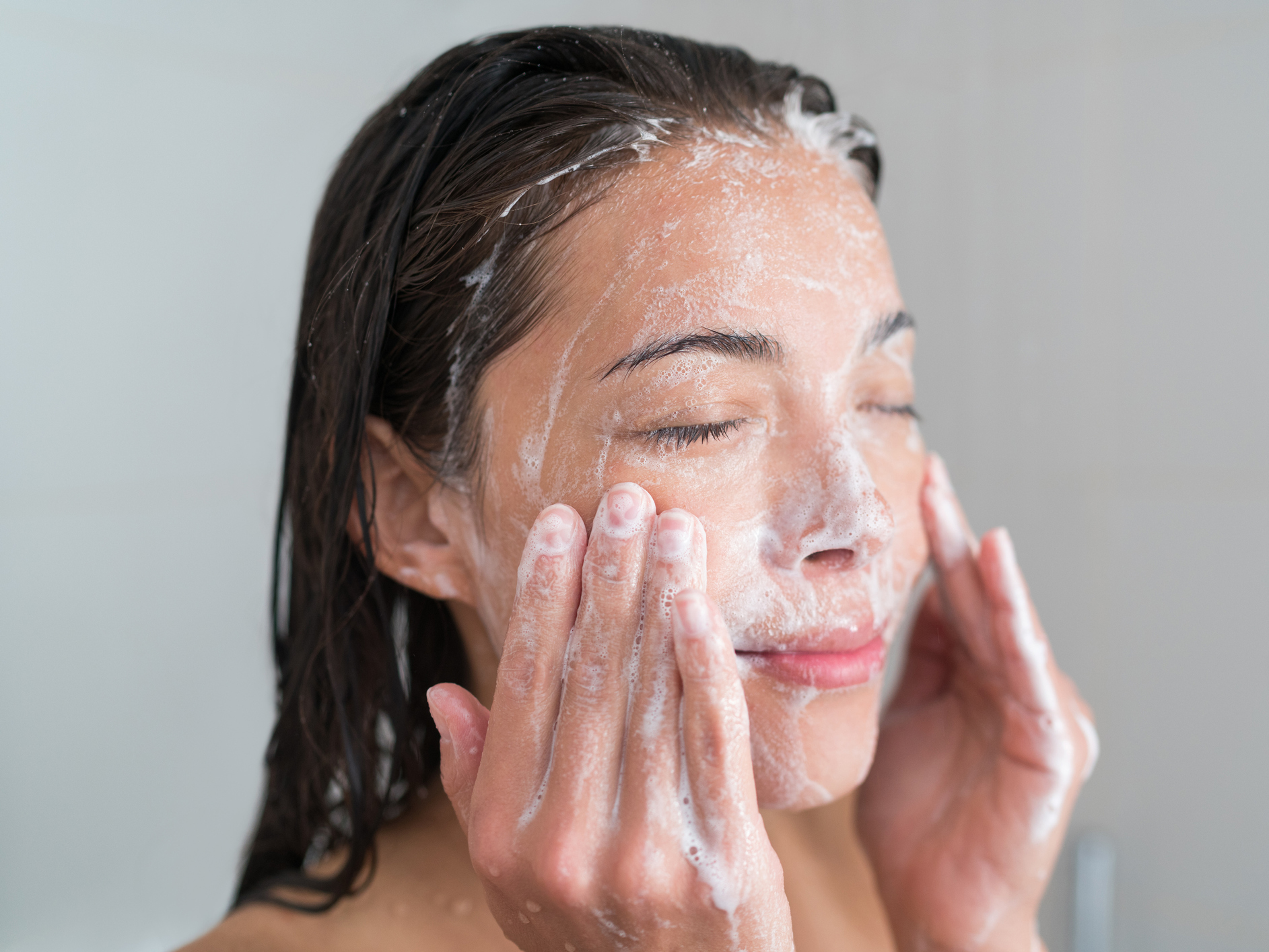Get Easy Health Digest™ in your inbox and don’t miss a thing when you subscribe today. Plus, get the free bonus report, Mother Nature’s Tips, Tricks and Remedies for Cholesterol, Blood Pressure & Blood Sugar as my way of saying welcome to the community!
Why are Americans getting clean with a cancer-causing chemical Canada has banned?

Have you taken a good look at the ingredient list on your shampoo lately? How about your toothpaste?
I’m willing to bet there’s an ingredient they all have in common. It was there when I took a look at my own shampoo bottles, toothpaste tubes, and face washes. In fact, any product that foams or bubbles most likely includes this ingredient.
The problem? It’s a harsh chemical (it’s also used in car washes!) that can irritate the skin and eyes, especially if you don’t wash it off right away.
But manufacturers have found a solution, a chemical process that makes this ingredient less harsh.
Unfortunately, the by-products of this process are linked to even worse health concerns than just irritated skin. It’s a case of “out of the frying pan, into the fire.”
Sodium lauryl sulfate: A foaming skin irritant
Sodium lauryl sulfate (SLS) is what’s known as a surfactant. It lowers the surface tension between liquids. It’s what makes your body wash, toothpaste and dish soap foam and bubble.
SLS can be found in all sorts of personal care products, from toothpaste and soap to shaving cream, hair removal products, and sunscreen.
All of these products are topical (applied directly to the skin).
The International Journal of Toxicology reports that sodium lauryl sulfate is safe for brief use if rinsed thoroughly from the skin. For products that remain on the skin, such as cosmetics and lotions, the concentration of SLS should not exceed 1%.
But product labels don’t reveal the percentage used. So, how do you keep yourself safe?
One solution might be to look for products that don’t have SLS but instead have its cousin, sodium laureth sulfate (SLES).
But you’d be jumping right into the fire.
Ethoxylation: A process that creates cancer-causing chemicals
A chemical process called ethoxylation converts sodium lauryl sulfate into its less-harsh cousin, SLES. But, as with most chemical reactions, other chemicals, known as by-products, are unintentionally created.
The process of ethoxylation (the addition of ethylene oxide), creates a chemical by-product known as 1,4 dioxane (often just called dioxane).
But here’s the trouble: dioxane won’t be listed as an ingredient on your shampoo, dish soap, or shower gel.
That’s because it’s not an ingredient that was intentionally added, but a chemical by-product of a process that makes your product less harsh and more pleasant to use.
If you see sodium laureth sulfate on the label, you can be sure that dioxane is present, too. Same if your label lists PEG compounds or chemical ingredients that include xynol, ceteareth, or oleth in their names.
And what’s the trouble with dioxane, you might ask?
The Environmental Protection Agency considers dioxane a “probable human carcinogen.” It is included in California’s Proposition 65 list of chemicals known or suspected to cause cancer or birth defects.
Dioxane is on the EPA’s list of top ten chemicals for evaluation, under the update to the Toxic Substances Control Act of 1976.
In Canada, dioxane has been banned as an unsafe ingredient in cosmetics and household products.
Unfortunately, the wheels turn slowly here.
The Act was updated in 2016. As of today, no action has been taken on restricting or eliminating the use of dioxane in cosmetic or household products.
In the meantime, you have a choice about whether you expose yourself to dioxane. Fortunately, there are alternatives.
How to avoid dioxane
- Look for products that are certified under the USDA National Organic Program and bear the “USDA Organic” seal
- Read product labels carefully, and avoid products with PEG, polyethylene, polyethylene glycol, polyoxyethylene, oxynol, or ingredients with the suffix “-eth” in their names, such as myreth, oleth, laureth, or ceteareth
- In general, avoid products with unpronounceable ingredients
- There are plenty of resources online for making your own shampoo, lotion and other products using easy-to-find ingredients like coconut milk. Get started with these 3 personal care products you can make at home!
Editor’s note: Have you heard of EDTA chelation therapy? It was developed originally to remove lead and other contaminants, including heavy metals, from the body. Its uses now run the gamut from varicose veins to circulation. Click here to discover Chelation: Natural Miracle for Protecting Your Heart and Enhancing Your Health!
Sources:
- What Is Sodium Lauryl Sulfate, And Why Are People Avoiding It in Soap And Toothpaste? — ScienceAlert
- Known and Suspected Hormone Disruptors — Hormone Soup
- 1,4-DIOXANE — Safe Cosmetics
- Draft Risk Evaluation for 1,4-Dioxane — United States Environmental Protection Agency
- #ChemicalCallout: 1,4-Dioxane — Made Safe













